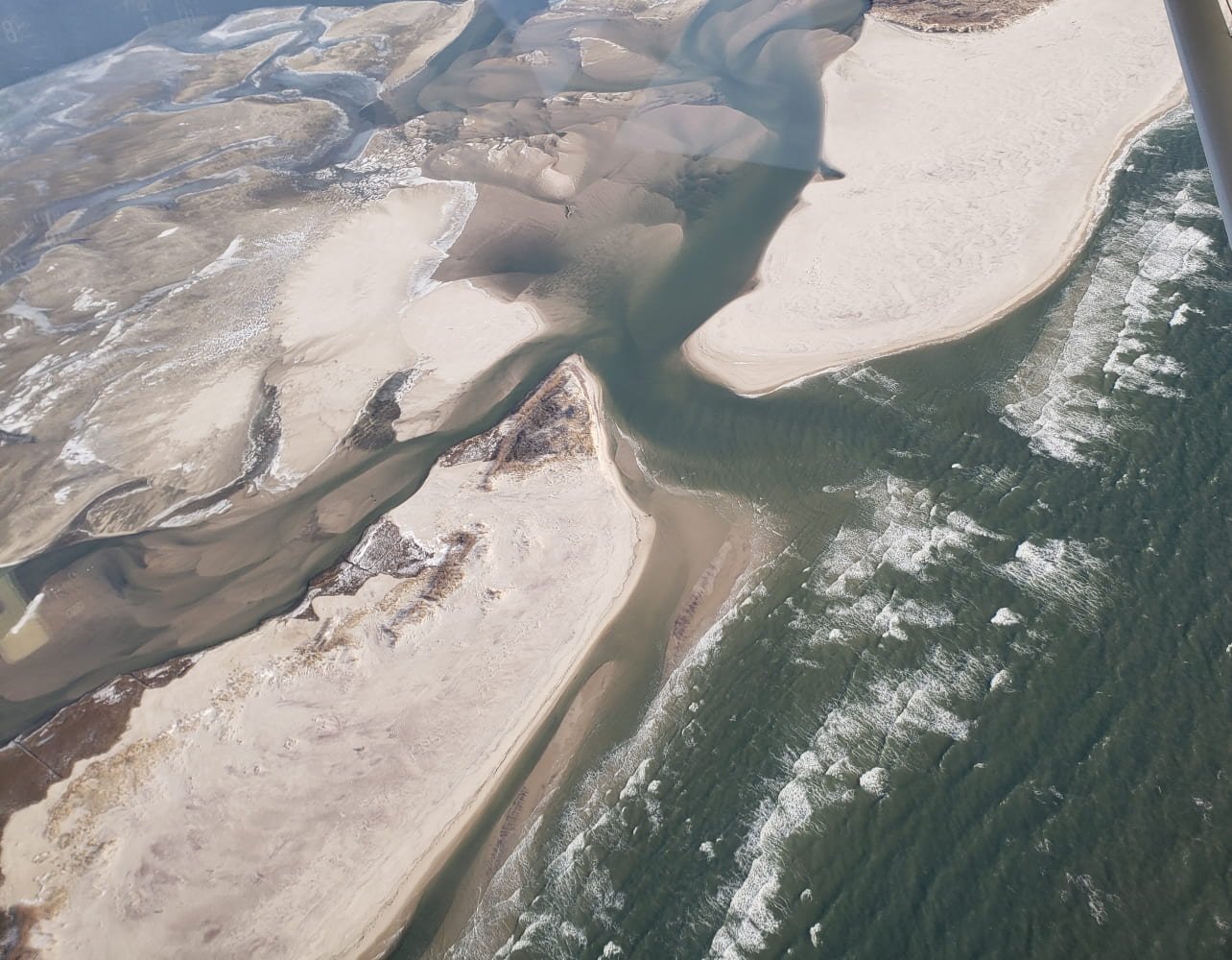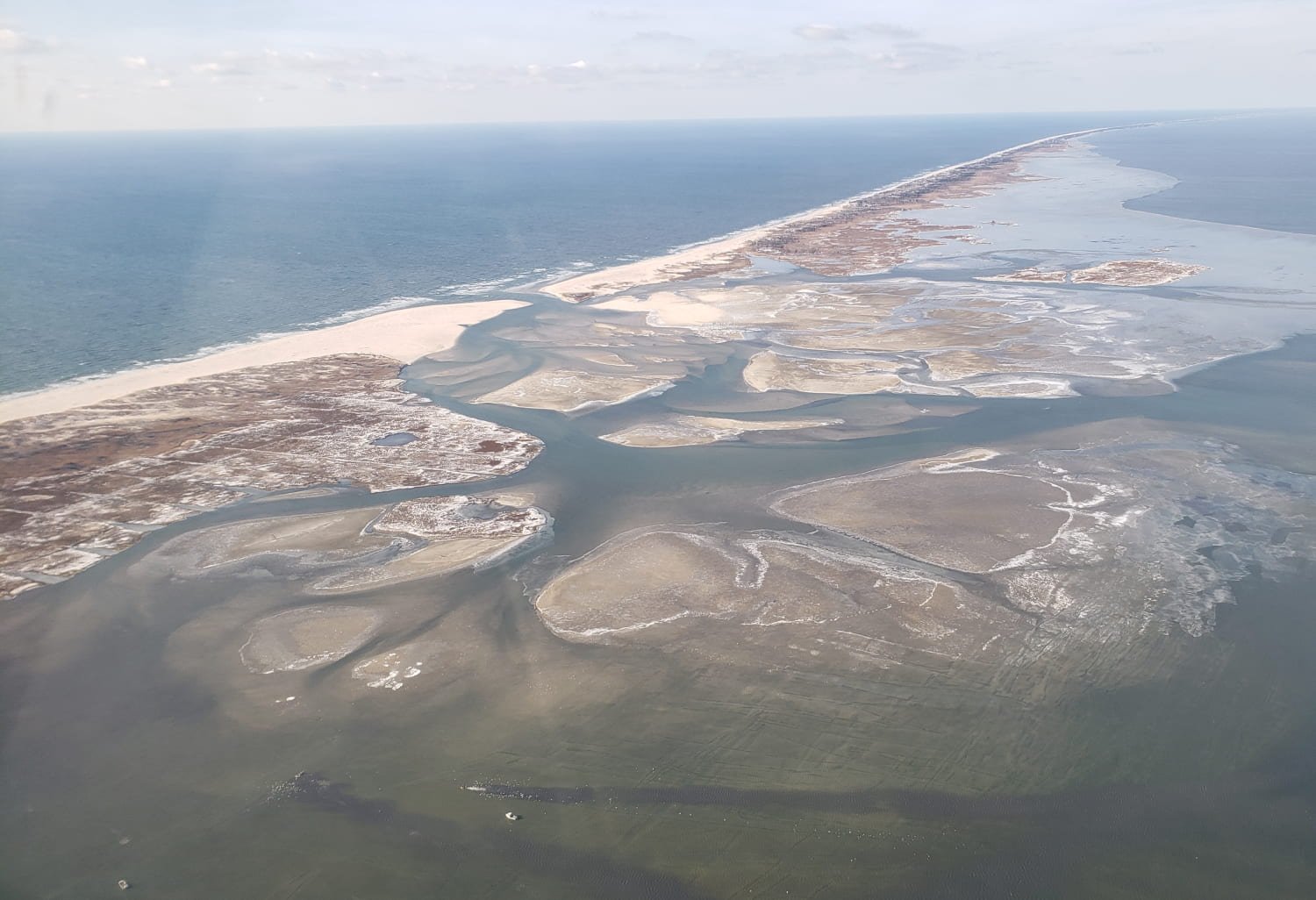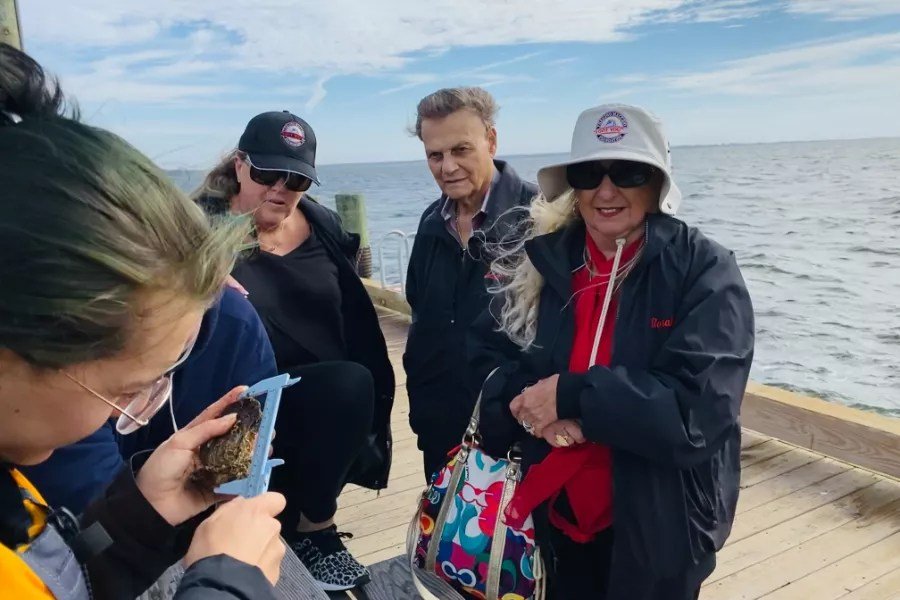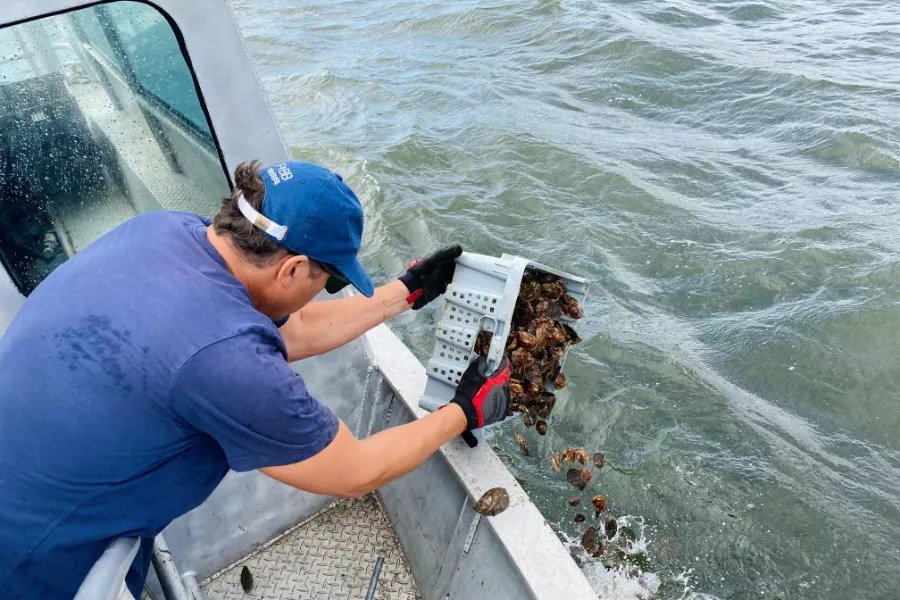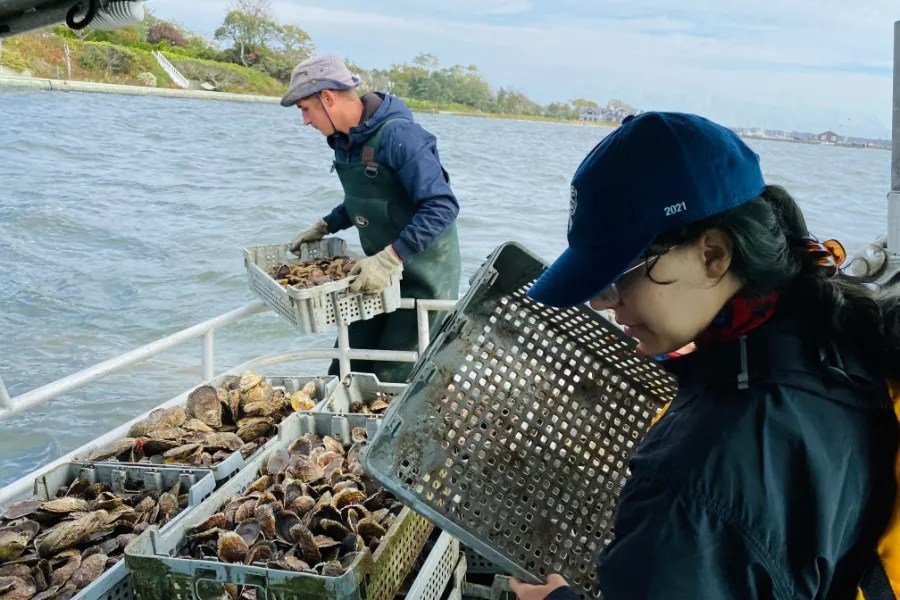Friends of Bellport Bay executive director Rae Specht sat in the marina gazebo, keeping an eye on the interns and youngsters who arrived early at the FOBB Fridays program last week.
“I wanted to make an oyster-specific camp,” said Specht, who added that the interactive inspiration came from programs with CEED. “It’s a mix of education [and] also volunteerism for teens 13 to 18. We put them to work in a fun way.”
Thirty-two kids have been participants in the FOBB Fridays program in July: three-hour sessions in the morning for 9-to-12-year-olds, three hours in the afternoon for 13-to-15-year-olds.
Before kids started lugging sand and bay water into two tanks positioned at the shoreline, Specht provided a description of the various sessions.
“For the first program, we were rained out, so we went to the Community Center and did gyotaku, Japanese fish painting,” she said.
What’s that?
In 19th-century Japan, fishermen found a way to record their prize catches, Specht explained. Gyotaku, or fish rubbing, was a way for the fishermen to print inked fish onto paper, creating a permanent record of their size. Nontoxic sumi-e ink was used, a black ink used in writing and painting that could easily be washed off. After the print was made, the fish were released or sold at the marketplace.
“We used local fish (they were already dead) from Mastic Seafood,” Specht said of the activity. “Then we brought oysters to the Community Center and did random samplings of juvenile oysters and facts about them.”
At another session, “we had Cornell Cooperative Extension talk to us about the importance of eelgrass,” Specht added. Burlap discs were made by the youngsters. Cornell would then seed the burlap discs with eelgrass and drop them into nearby areas like Fishers Island and John Boyle Island in the fall.
“Today, we’ll do an experiment,” she said. “We’ll fill up two tanks with sand and bay water and put a number of oysters and clams in one of the tanks.”
There were interns like Jesus (Manny) Maldonado and Thaleia Neal with volunteers, sisters Nikolle and Maria Slavnova.
The tank with the shellfish would reveal their grace in filtering water, which emerges pristine. (Oysters can filter 50 gallons of water per day; large clams can filter 24 gallons.) The tank without the shellfish would, well, look like a cloudy mess. In the afternoon, the young people would be motored out by boat so they could plant oysters in FOBB’s sanctuary.
For those not in the know about Friends of Bellport Bay, this nonprofit founded by Thomas Schultz and Katia Read, has already planted 1 million oysters in Bellport Bay since 2015; 500,000 more are planned for 2021. Specht has been onboard as executive director for the last year.
No set fee for the program was required; parents pay what they want as contributions to FOBB.
Andres Newman, 12, was upfront about why he came to FOBB Fridays.
“I spend a lot of time on the bay,” he said. “I want the bay to be clean so I can swim in it more. I feel it would benefit a lot of people if it were cleaner.”
Bodhi Griffiths, 10, who surfs, said, “I like hanging out in the ocean and learning about new species and how the oysters make the water cleaner.”
Later on, they would attend the art showcase at Gallery 125 and view the creations they produced, including the fish prints and those from Katia Read’s ceramics workshop that were bay-inspired.


